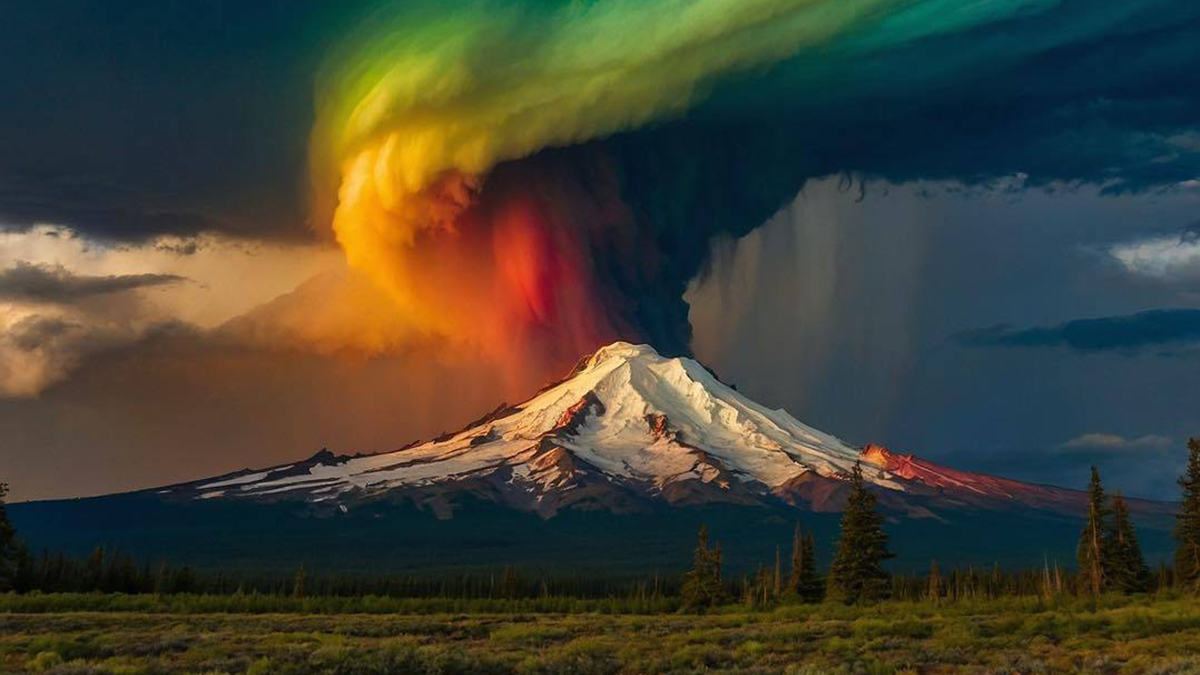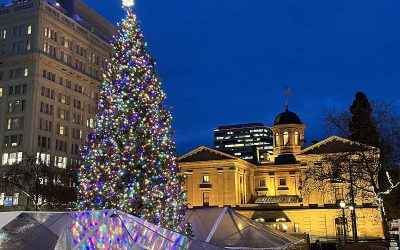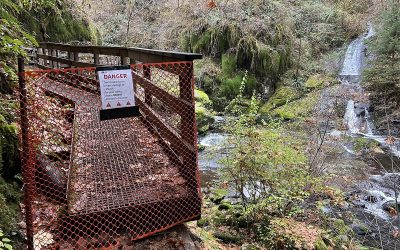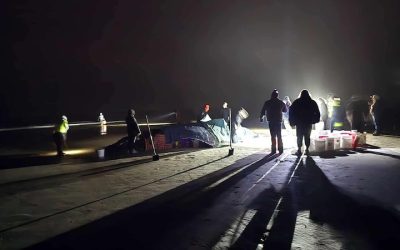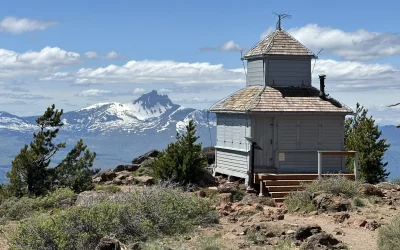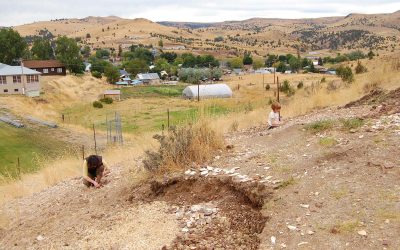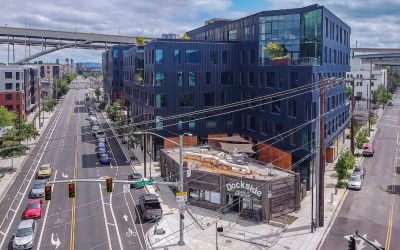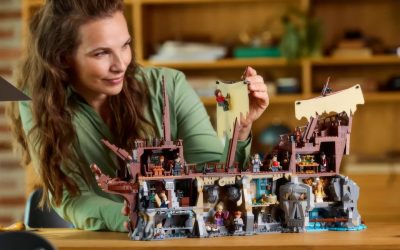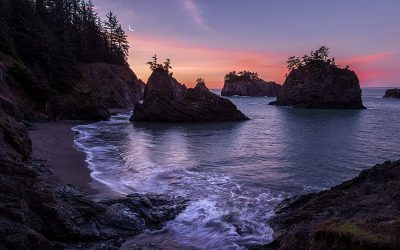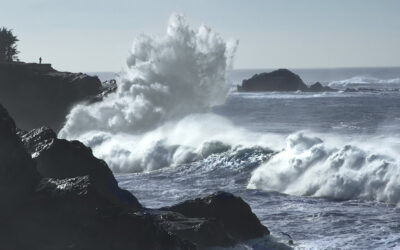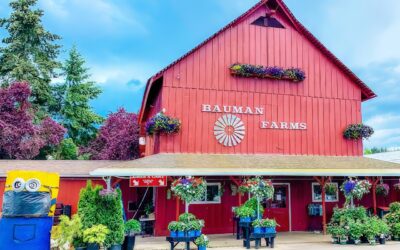I never dreamed in a million years, when starting "That Oregon Life" ten years ago with the idea of celebrating all the best parts of Oregon, that I would find myself, a decade later, alongside random new Facebook and Instagram pages popping up daily with clearly AI-generated images being passed off as real. Not just in Oregon, but all across the world, these images are being spread like wildfire, capturing the attention of thousands—sometimes millions—of unsuspecting viewers. What started as a platform to showcase the genuine beauty and charm of Oregon has now been thrust into a bizarre competition against a flood of AI-generated landscapes that, while sometimes visually stunning, are often hilariously absurd and frustratingly misleading.
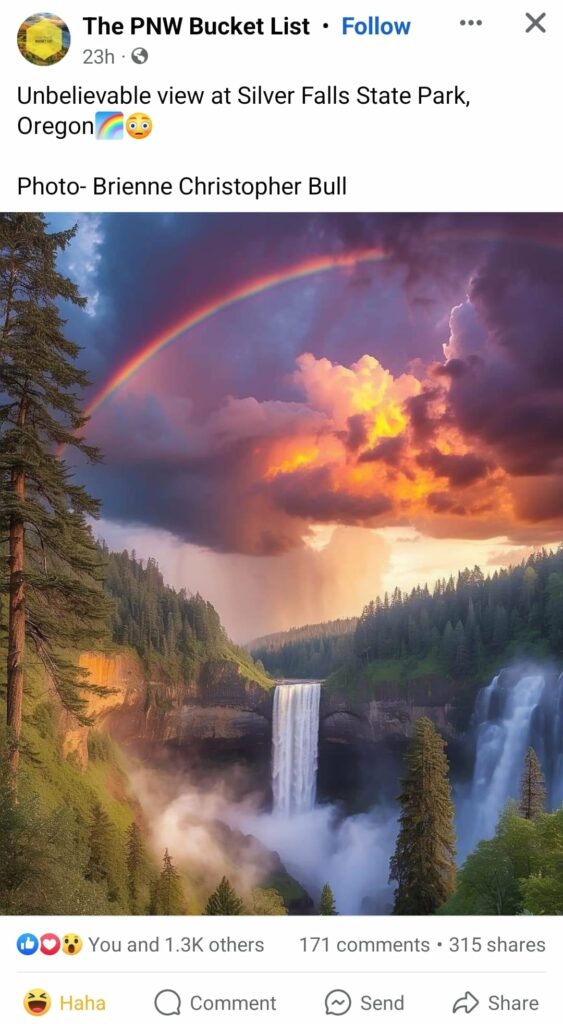
Photoshopped and enhanced images are one thing; they’ve been around for years, and they’re fairly easy to spot if you’re paying attention. But this is on another level. The AI-generated images are so convincing at first glance that they often fool even the most discerning eyes. It’s beyond ridiculous. And what’s worse is that many of these images are being shared and celebrated as if they were real, further blurring the lines between what’s authentic and what’s artificially created.
Take, for instance, a Facebook page known as "Ashlynn Small." This page doesn’t just limit itself to Oregon; it seemingly covers the entire United States, with a never-ending supply of AI-generated landscapes. One of the most laughable examples is a place dubbed "Tahkenitch Falls."
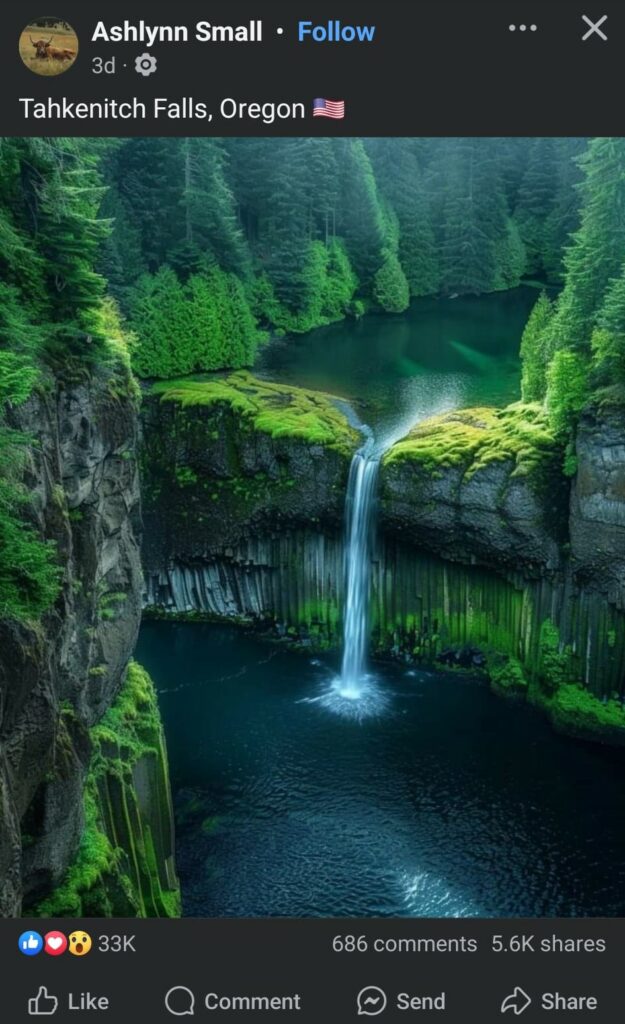
At the time of writing this, the image has garnered over 33,000 reactions on Facebook. The problem? "Tahkenitch Falls" doesn’t exist. It’s a completely fabricated location, yet the image has been shared and liked thousands of times, with comments from people who genuinely believe this is a hidden gem in Oregon.
And then there’s our beloved Silver Falls State Park. It’s shown off in yet another corny Facebook page known as "Viral Studio 38." The problem here isn’t just that the image isn’t Silver Falls State Park; it’s that there is nothing in Oregon that even remotely resembles what’s being shown. The AI-generated photo is so far off from reality that it’s almost laughable—almost, but not quite, because it’s also infuriating to see such blatant misinformation spread so easily.
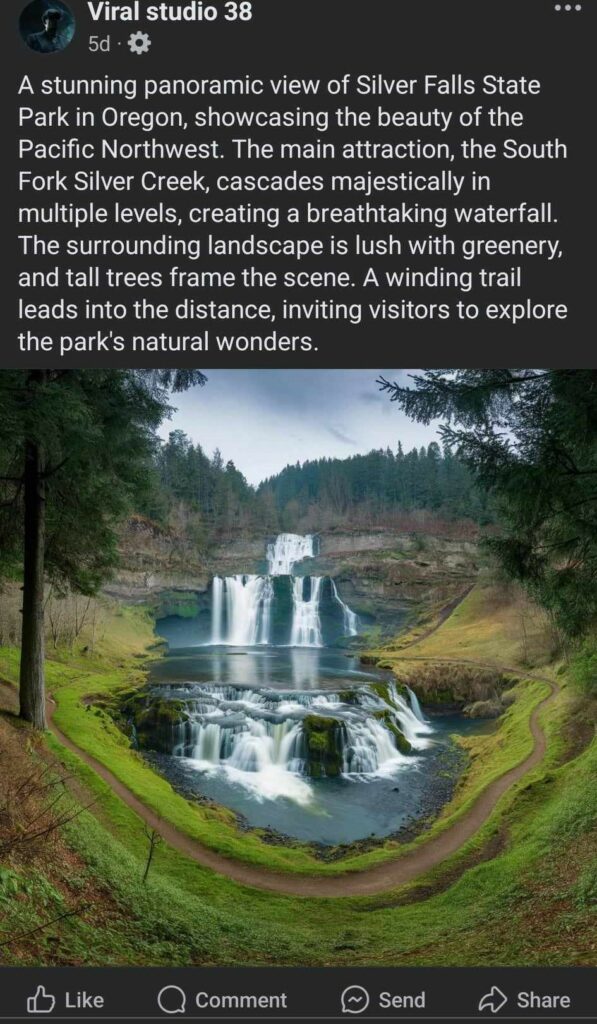
"Viral Studio 38", a self proclaimed "gaming video creator" is seemingly shotgun-posting countless images all at once. A quick glance shows multiple images being posted just five hours ago, and among their favorites is Crater Lake. But even this iconic Oregon landmark isn’t safe from AI’s awkward manipulations. In one of these images, Wizard Island is awkwardly centered, throwing off the natural beauty of the scene. Even more hilarious, if it weren’t so aggravating, are what appears to be some seagulls flying over the AI-generated photo. Strange, I mean I suppose it's possible, however I have yet to personally see any seagulls upon my many visits to Crater Lake, Yet, the image continues to circulate, gathering likes and shares as it goes.
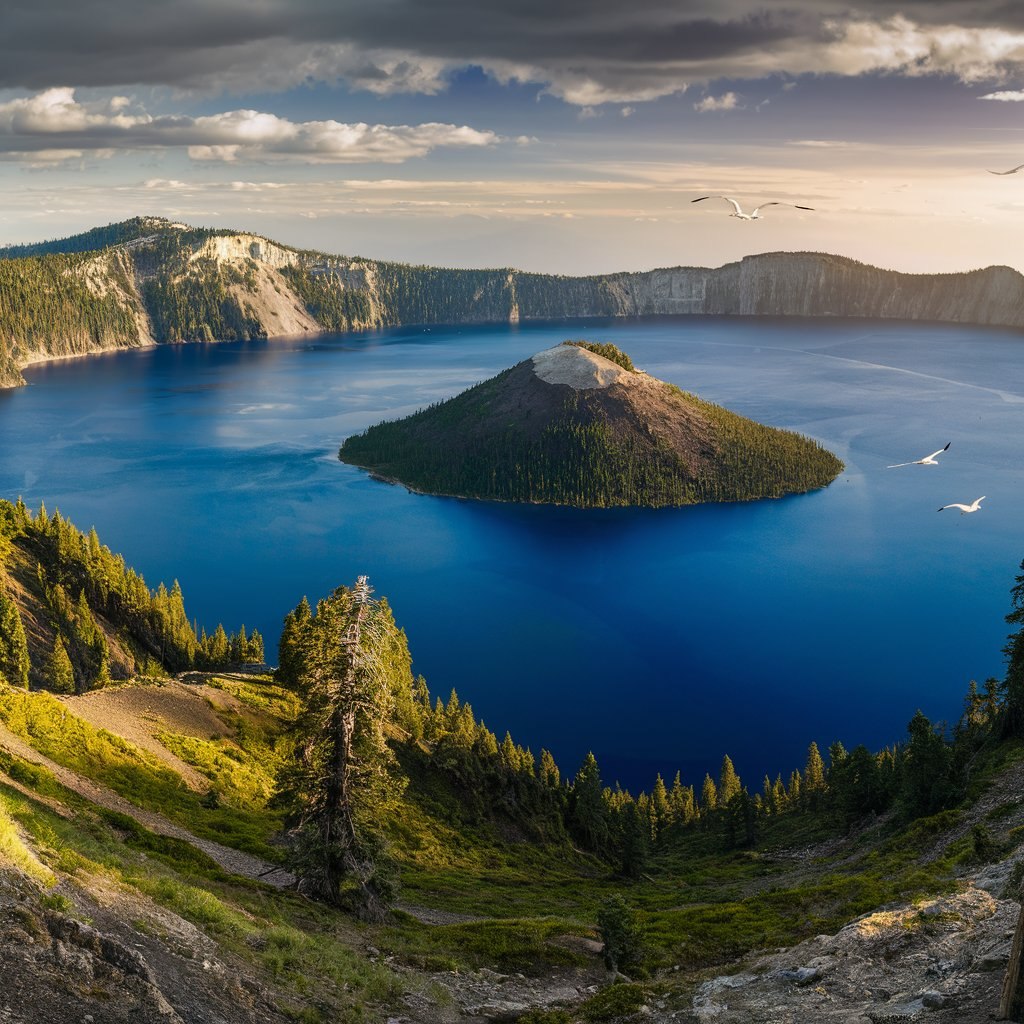
To their credit, the URL to the page does read "https://www.facebook.com/AI.images38", clearly showing AI here. However, who's actually going to notice this? They aren't exactly going out of their way to announce on their posts these images are AI generated.
And if these weren’t bad enough, how about a twisting rainbow defying nature as it appears to come out of glorious Mt. Hood? Yes, you read that right—a rainbow, somehow managing to contort itself in ways that are physically impossible, emerging from one of Oregon’s most iconic mountains. It’s as if AI decided to throw in a little fantasy just to see how far it could push the boundaries of believability. Spoiler alert: it’s pushing them too far. The only thing missing is a leprechaun and a pot of gold at the end of this absurd rainbow—because why not? If we’re going to indulge in AI-generated fairy tales, we might as well go all the way!
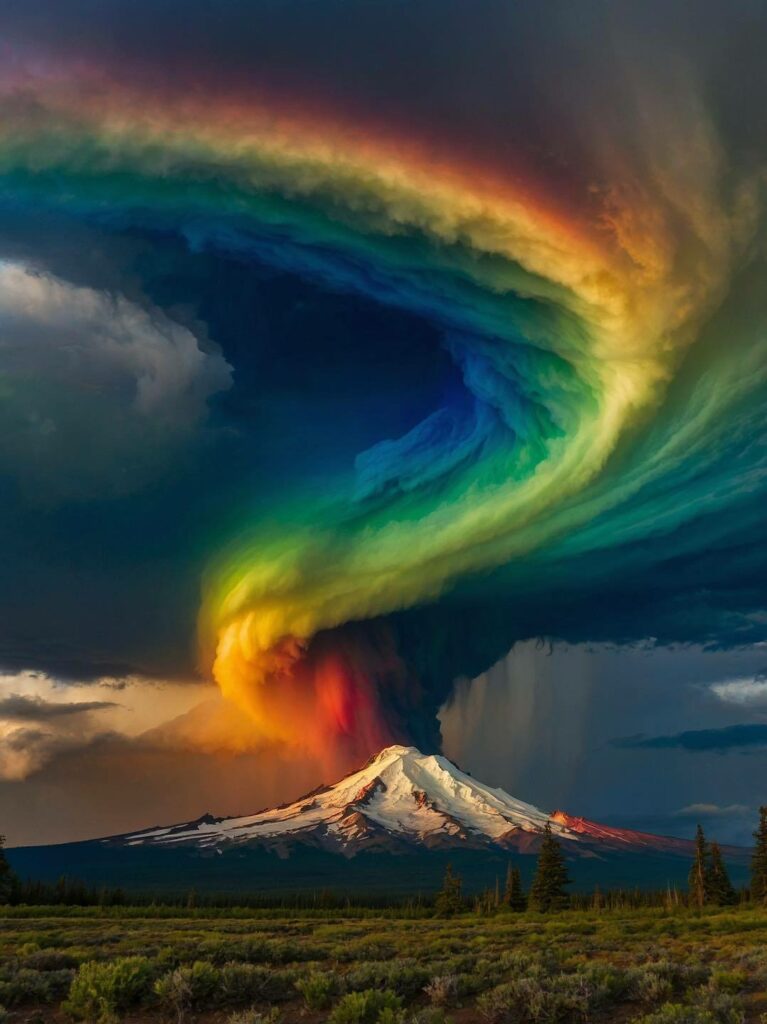
As we move forward into the future, the problems we face with AI become more evident. The technology has been released into the public virtually overnight, causing a disruption that few were prepared for. What is even the solution? AI has opened a Pandora’s box, and now we’re left grappling with the consequences. How do we discern real from fake in a world where AI can generate images that look convincingly authentic?
The challenge is compounded by the countless comments on these posts, where so many people are convinced these images are real. It’s a testament to the power of AI and the trust people place in what they see on social media. But it’s also a disturbing indication of how easily misinformation can spread when the tools to create it are in the hands of anyone with a computer and an internet connection.
Yes, this is hilarious—but it’s also extremely annoying. It’s frustrating to see the genuine beauty of Oregon, a place I’ve spent years celebrating and promoting, being overshadowed by these fabricated images. It’s annoying to see people duped into believing these AI creations are real, especially when they’re being shared on a platform that was meant to highlight the authentic charm of the Pacific Northwest.
While the rise of AI-generated images has provided us with some laughs and a good dose of absurdity, it’s also a stark reminder of the challenges we face as we navigate this new digital landscape. As we continue to celebrate the real beauty of Oregon, let’s also be vigilant in calling out the fakes and educating others on how to spot them. After all, there’s nothing quite like the genuine article, and no AI can replicate the true spirit of Oregon. With that said, you have our word that we will keep it real here at That Oregon Life, as there of course is no shortage of actual photographs being captured by ACTUAL photographers.
With that said, for those who appreciate authentic photography, we will leave you with a real rainbow captured in a stunning moment over Mount Hood, from our good friend Gary Randall on Facebook. Make sure to give him some love on Facebook!

